How to Choose the Right Paint Color

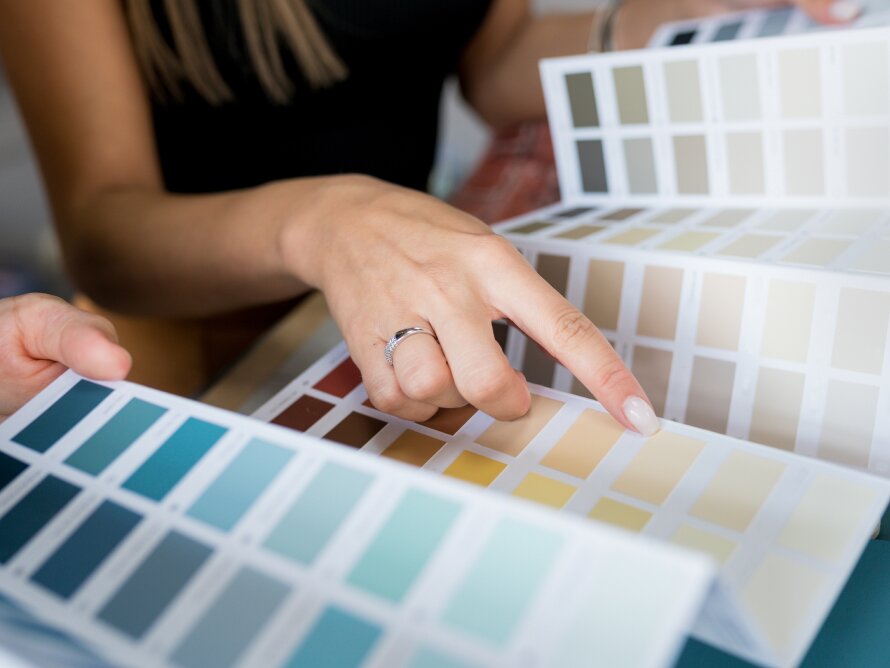
Bold paint and fresh new furniture and decor can transform the look and feel of any space. But how do you ensure your home feels cohesive in color and style when choosing the paint color for the walls? Follow our paint color guide to pair the right paint colors with your furnishings.
When you choose the right color for your furniture and space, you have the power to instantly refresh any room, accent your favorite furniture and accessories, and set the mood, tone, and style. Follow these steps when bringing a color scheme into your furnishings, walls, and accessories.
When you choose the right color for your furniture and space, you have the power to instantly refresh any room, accent your favorite furniture and accessories, and set the mood, tone, and style. Follow these steps when bringing a color scheme into your furnishings, walls, and accessories.
1. Consider the Room
Before you look at paint colors, consider the function of the room you’re decorating. Bedrooms benefit from calming tones like lavender, forest green, or slate blue to promote a soothing, peaceful, and restful atmosphere. Living rooms should have bright and lively atmospheres with pops of color like orange, red, or eccentric blue. Kitchens and dining areas should feel clean and sophisticated with grays, greens, and browns.
If you are repainting a fully-furnished room, consider the existing furniture, accessories, and colors that you’re hoping to complement and accent. Start by picking an existing object in your space with a color you love, such as a throw pillow. Find paint strip samples that blend well with that piece of furniture, and then decide on a dominant, secondary, and accent color.
If you are repainting a fully-furnished room, consider the existing furniture, accessories, and colors that you’re hoping to complement and accent. Start by picking an existing object in your space with a color you love, such as a throw pillow. Find paint strip samples that blend well with that piece of furniture, and then decide on a dominant, secondary, and accent color.
2. Choose Color Tones
After considering the room you’re decorating and the mood you want to evoke, choose tones that benefit the space. If you are repainting a fully-furnished room, consider the existing furniture, accessories, and colors that you’re hoping to complement and accent. Start by picking an existing object in your space with a color you love, such as a throw pillow. Find paint strip samples that blend well with that piece of furniture, and then decide on a dominant, secondary, and accent color.

Warm
Oranges, yellows, and reds bring energy to a room. Pair a warm-toned wall with muted furniture tones for a balanced look, or pair muted walls with warm-toned furniture to wrap yourself in a cozy embrace.

Neutral
Grays, beiges, and creams provide a quiet, focused background. Neutral colors are the perfect backdrop for patterned, textured, or bright furnishings or accessories, giving the scene a clean and classy feel.

Cool
Greens, blues, and purples are calm, fresh, and outdoorsy colors. Cool colors are great for bedrooms, bathrooms, and spaces where you want a soft and soothing atmosphere.
3. Decide How Many Colors You Want in Your Color Scheme
The number of colors in your palette is the next step in creating a cohesive flow throughout your space.
•
One Color
Monochromatic color palettes are made from different shades of one color for a put-together, soothing look.
Monochromatic looks can be created with any color. They’re often made with neutral tones like black, white, and gray, but you can incorporate a colorful monochromatic palette with shades of blue, green, red, and more.
Monochromatic looks can be created with any color. They’re often made with neutral tones like black, white, and gray, but you can incorporate a colorful monochromatic palette with shades of blue, green, red, and more.
•
Two Colors
A complementary color scheme pairs two colors at opposite ends of the color wheel, such as red and green or blue and orange. It creates a striking contrast and an eclectic look.
•
Three or more colors
An analogous color scheme is made from colors that neighbor each other on the color wheel. An analogous room uses at least three hues to create a vibrant and cohesive room. It is typically made of a base color, like green, and accented with two adjacent colors, like yellow and blue.
Similar to a complementary color scheme, a triadic color scheme uses three, equidistant colors on the color wheel to create a vibrant and playful room. This can include a dominant color like red, accented with yellow and blue.
Similar to a complementary color scheme, a triadic color scheme uses three, equidistant colors on the color wheel to create a vibrant and playful room. This can include a dominant color like red, accented with yellow and blue.
4. Refer to the 60-30-10 Rule
Once you have the colors you want to incorporate into your space, it’s time to start figuring out the balance and use of each color. A useful design trick is to employ the 60-30-10 rule. The 60-30-10 rule states that 60 percent of the room should be a dominant color, 30 percent a secondary color, and 10 percent of the room an accent color. This rule makes any room feel balanced and professionally designed.
Color Families
Now that you know how to choose paint colors, it’s time to decide which colors you’re incorporating into your home.
In general, neutrals, such as beiges or grays, work well as dominant colors. They lay a solid base for secondary and accent colors to pop. Secondary colors look great on large furniture pieces, rugs, or drapes. Accent colors should be the brightest in your palette and also used the most sparingly, found in small elements like wall art or accent pillows.
In general, neutrals, such as beiges or grays, work well as dominant colors. They lay a solid base for secondary and accent colors to pop. Secondary colors look great on large furniture pieces, rugs, or drapes. Accent colors should be the brightest in your palette and also used the most sparingly, found in small elements like wall art or accent pillows.
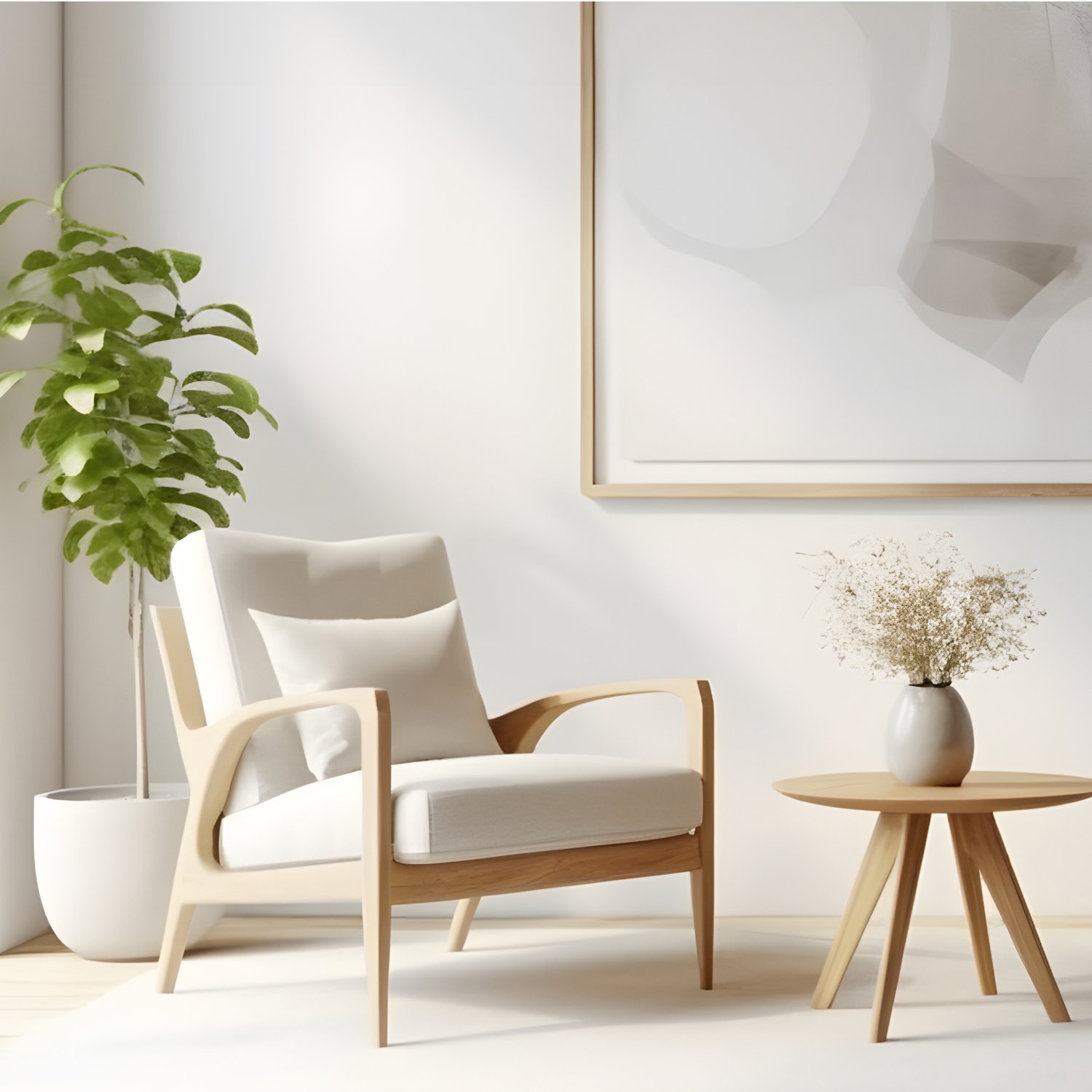
White
White shades include pure white, ivory, and cream. A white room has a refreshing, simple, and invigorating feel. White shades make a room feel light and create a bold statement when paired with darker colors. White is a versatile and timeless choice that pairs with any complementary color.
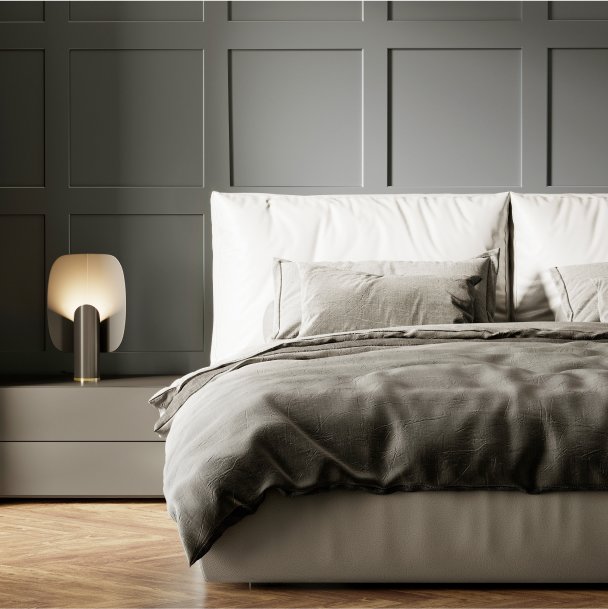
Gray
From a light taupe to a deep charcoal, gray is the perfect neutral. It pairs well with any color and provides an elegant, calming, or bold atmosphere. Gray works well in any space in the house.

Black
Sleek, timeless, and striking, a black wall acts as a dramatic backdrop for your space, while black pops of furniture give off a sophisticated and elegant look. Black is also a neutral color, so it pairs well with complementary shades. When used correctly, dark tones make any room have a professionally designed look.
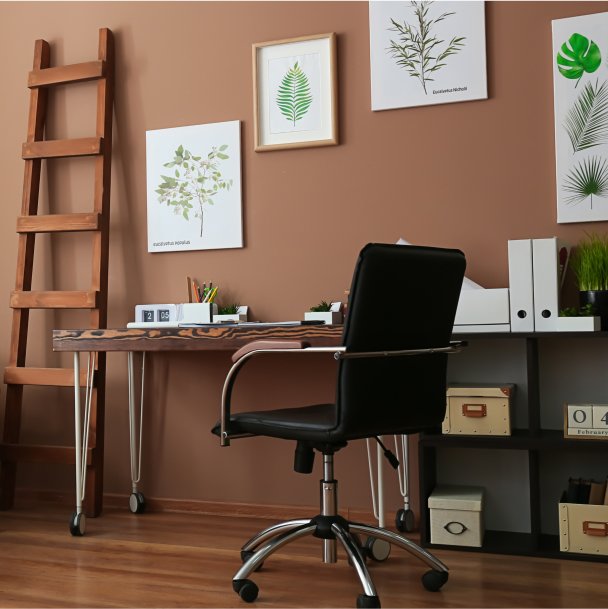
Brown
Browns, beiges, and tans offer a more casual, earthy look than a classic black or white. Brown shades have a natural, relaxing, laidback feel and pair well with many complementary colors.

Red
Red is a powerful, bold, and exciting color. Having red in your space makes a room feel energetic and stimulating. However, softer shades of red bring a sense of sophistication and warmth. Red is often used as an accent color when paired with grays and whites to add a strong statement.
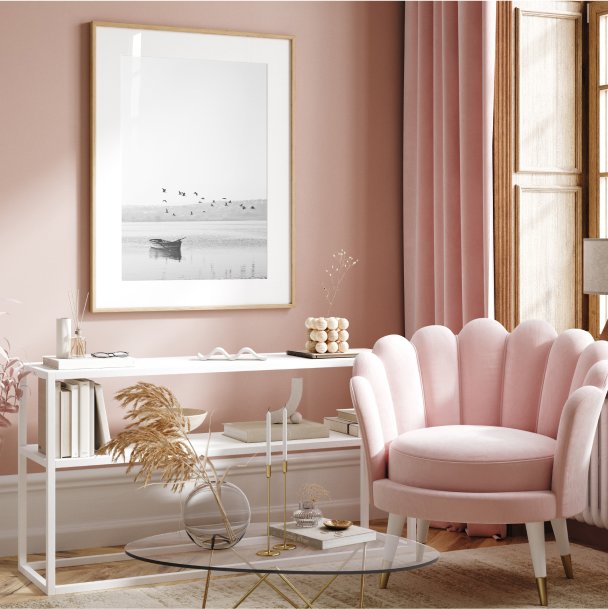
Pink
Though it is a part of the red color family, pink evokes a soft, delicate, and romantic feel. A calming blush is the perfect addition to bedrooms, while strawberry or magenta are great accent colors in living spaces.

Orange
Evoking a sense of vibrancy and refreshment, orange is a balance of warmth and energy that demands attention. From coral to burnt orange, it works well as an accent or secondary color in kitchens and living spaces.
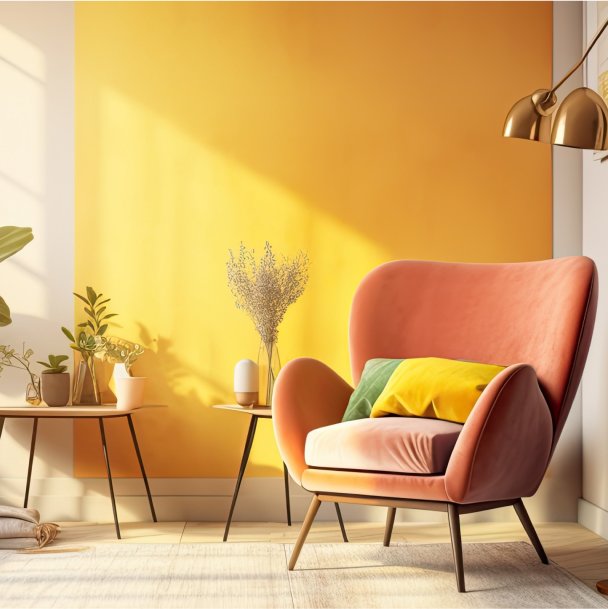
Yellow
A splash of yellow in your home brightens up any day. This vibrant color evokes a sense of happiness and optimism. Whether a soft, gentle shade or a statement gold, yellow complements reds, oranges, blues, neutrals, and more.
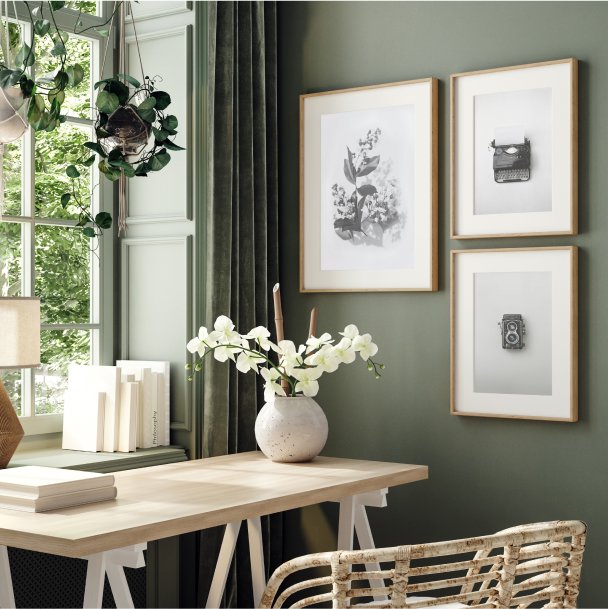
Green
Symbolic of nature, green is a grounding, earthy color that adds a sense of calm and relaxation. From a subtle sage to a lively burst of olive, green hues work well with various colors in any space.
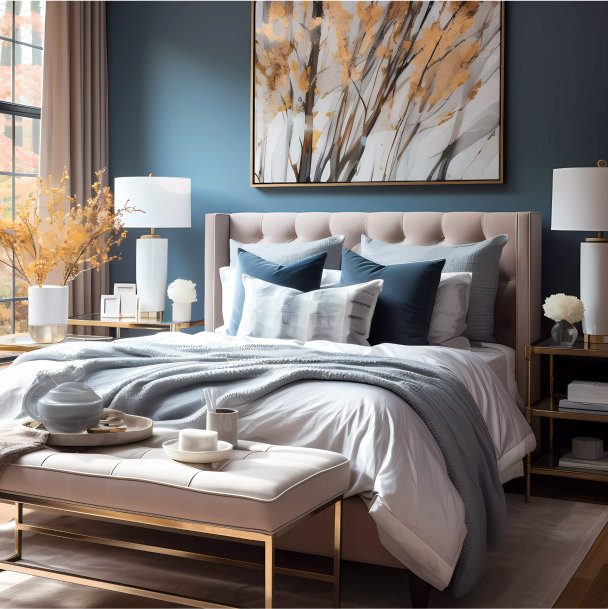
Blue
From a bright blue or turquoise to a royal or midnight blue, shades of blue include a broad range of hues that boost relaxation, style, and class. Add some energy into living spaces with an eccentric blue or soften the tones for a soothing space.
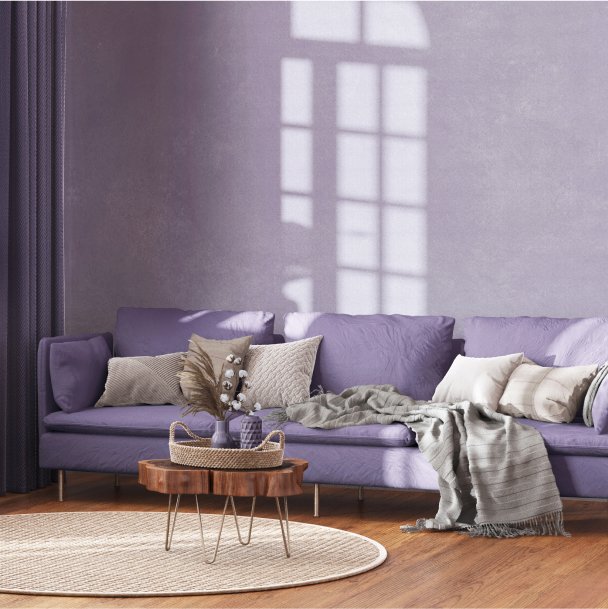
Purple
Associated with royalty and luxury, purple has a bold personality and distinguishes a room. Soften the hue with delicate lavender and lilac, or add richness with deep plum and indigo.
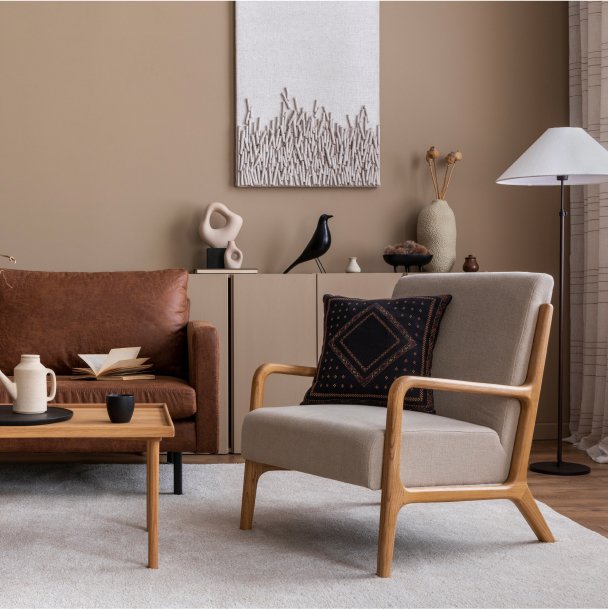
Neutrals
Neutrals, such as beiges or grays, work well as dominant colors. They lay a solid base for secondary and accent colors to pop. Secondary colors look great on large furniture pieces, rugs, or drapes. Accent colors should be the brightest in your palette, but use them sparingly, such as with wall art or accent pillows.
Conclusion
The most important thing to remember when choosing colors for your room is to choose colors you love and create a design that speaks to you. Use our paint color tips to guide your decision and narrow your options. Ultimately, thoughtfully chosen colors can make any room look like it was designed by professionals, while still showcasing your unique personal style.
Shop now